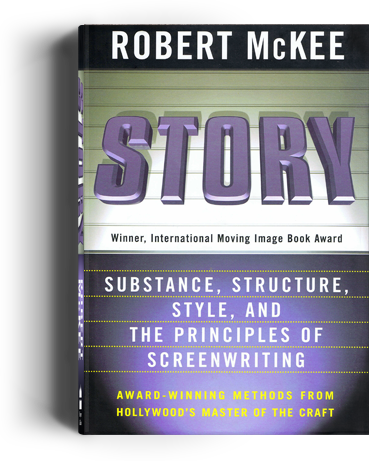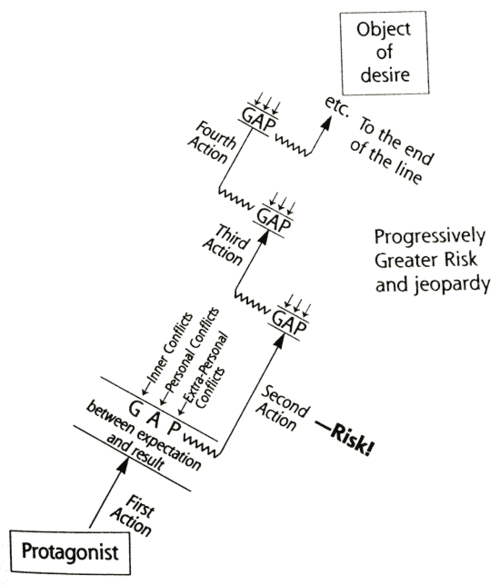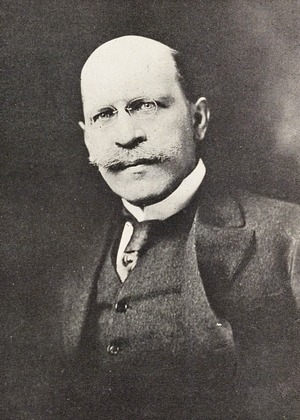 This is Robert
McKee’s STORY, first
published in 1997. Many of you have read it. Though I do not agree
with every idea McKee offers in this book, I have generally
considered McKee superior to his competition in one particular area.
This would be his approach to plotting. While most other “gurus”
seem to treat plotting as a simple linear activity, putting scenes
down one at a time, brick by brick, piece by piece, inevitably moving
the story towards certain pre-set structural guideposts, McKee
envisions plot as the interplay between character psychology and the
reality of the character’s world. To McKee, plot is all about
expectation versus result.
This is Robert
McKee’s STORY, first
published in 1997. Many of you have read it. Though I do not agree
with every idea McKee offers in this book, I have generally
considered McKee superior to his competition in one particular area.
This would be his approach to plotting. While most other “gurus”
seem to treat plotting as a simple linear activity, putting scenes
down one at a time, brick by brick, piece by piece, inevitably moving
the story towards certain pre-set structural guideposts, McKee
envisions plot as the interplay between character psychology and the
reality of the character’s world. To McKee, plot is all about
expectation versus result.
In
an explanation similar to the one I use in Screenwriting
Down to the Atoms, McKee’s
protagonist begins his or her story intent to reach a far-off story
goal. To reach this goal, the protagonist must start with a series of
small, conservative steps that he or she believes will influence the
outside world in such a way that will allow him/her to get closer
to what he/she needs. In the character’s mind, these steps have
every reason to succeed. However, things do not go as the protagonist
plans. Rather than bend to the protagonist’s will, the outside
world resists in an unexpected way. To hear it in McKee’s own
words:
“The moment he takes this action, the objective realm of his inner life, personal relationships, or extra-personal world, or a combination of these, react in a way that’s more powerful or different than he expected. This reaction from his world blocks his desire, thwarting him and bending him further from his desire than he was before he took this action. Rather than evoking cooperation from his world, his action provokes forces of antagonism that open up the gap between his subjective expectation and the objective result...”
The
outside world refuses to fall in line with the character’s personal
expectations. According to McKee, whenever this happens there opens
up what he calls the GAP. A metaphorical chasm splits open between
the character and the result he or she wished to achieve. “On one
side is the world as we expect it to be, on the other is reality as
it actually is.” So to McKee, story conflict is all about thwarted
desires and the characters’ inevitable reactions.
When
the protagonist encounters this gap--this metaphorical canyon that
separates him or her from a necessary desire--the protagonist faces a
choice. He or she can quit out of disappointment or frustration, or
the protagonist can choose to alter his/her approach with a new
set of actions the protagonist believes will overcome the gap and
allow him/her to continue. So the protagonist, armed with the
wisdom acquired from the defeat of the previous set of expectations, chooses a new course of action. With these new actions
come a new set of expectations. The protagonist is certain that this
time the world will conform to his or her desire and success will follow. However, the world once again does not react as the
protagonist wishes. Expectations again clash with result, creating
another gap. The protagonist must rise above again, and find way to
get around this new gap so he or she may continue the character’s
quest. But the world continues to reacts in a negative, hostile way,
opening up gaps again and again. Using this pattern, McKee offers
this diagram to illustrate the course of a plot:
In
this way, McKee’s approach to plot seems to emulate the “Fool’s
Journey” structure commonly found in folktales where a naïve young
man leaves home for the first time to encounter a series of
unexpected troubles and opportunities. These force the fool to become
stronger and wiser, eventually allowing him to find success by
understanding the world for what it is, not what he originally
thought it to be.
If,
as I propose, this approach to plotting is indeed better-suited to
great dramatic stories than those taught by McKee’s predecessors,
one must consider why. It is my assertion that plotting from an
expectation/result frame of mind creates more engaging, more
authentic stories because it is far closer to the way which we
experience conflict our own lives.
I realized this by noting right away the parallels between McKee’s
approach to story and the ideas of a very different author writing on
a very different and far more significant subject.
 This
is Albert Camus (1913-1960). Camus was the author of such esteemed
works of 20th century
fiction as The Stranger, The Plague, and
The Fall. (The
Fall is a mind-blowing piece of
literature if read correctly. I highly recommend it.)
This
is Albert Camus (1913-1960). Camus was the author of such esteemed
works of 20th century
fiction as The Stranger, The Plague, and
The Fall. (The
Fall is a mind-blowing piece of
literature if read correctly. I highly recommend it.)
Camus
was also a philosopher. Once considered a strong proponent of
Existentialism, Camus grew dissatisfied with that school of thought
and pursued a philosophy of his own, eventually known as Absurdism.
(Do not let the name fool you. Here, “absurd” does not mean
“silly.” In fact, the absurd is a very serious matter.) Published
in his book The Myth of Sisyphus, Camus’s
views on the nature of the universe and the condition of the human
beings who must live within it, simplified for the purposes of this
article, are as follows:
- Human beings possess an undeniable instinct to seek out systems of order and meaning in the universe. They want to believe that things happen for a reason and that the world makes sense. Because of this desire, people construct systems of belief that place humanity at the center of the universe. We then create expectations based off of those beliefs and assume that reality will conform to our systems of order.
- Unfortunately, these expectations usually turn out to be little more than wishful thinking. The universe does not obey our rules. It is cold and indifferent, at times random and chaotic. It cares as little for individual human beings as an elephant would fleas on its back. Like the elephant, the world can shake us off at any time it pleases without even recognizing our existence. Humans are therefore at the mercy of the chaos of the universe, despite all their efforts to believe they are not.
- The most soul-shattering moments of a person’s life arise when events force the individual to face this contradiction head-on. The unexpected medical diagnosis, the sudden disaster, the abrupt death of a loved one causes one to wonder whether the systems of order and meaning they have put their faith in might be a lie. The dissonance between one’s ordered and meaningful expectations of the universe and its actual cold and indifferent results causes a disturbing abyss to open up in the individual’s psyche which Camus calls the ABSURD.
- With expectations shattered, human beings can react to the absurd in one of three ways. 1. Despair (which often ends in suicide). 2. A Leap of Faith (in which one continues to trust in a system of meaning despite the lack of objective evidence to support it). 3. Acceptance (by accepting a more accurate view of reality, the person abandons harmful illusions and comes to recognize what possibilities actually exist which might allow happiness and success within reality’s bounds.)
Here
we see that McKee’s views on plot development mirror Camus’s
views on human existence. Human beings, both real and story-based,
take actions after goals they believe will bring happiness or success.
However, much like an ant crawling its way across the kitchen floor,
they have no way of truly understanding the true scale and magnitude
of the world around them. They can only proceed based on personal
expectations conceived by way of their very limited views.
However, more often than not, these expectations are short-sighted or
false. The world does not react in the way they wish, and instead of
yielding the way, it throws roadblocks in their path. When
expectations are denied, people have three options: a. quit, b. keep
their faith, lower their heads, and try to plow through the
resistance, or c. learn from the experience, adopt a new perspective, and then find a new course of actions more likely to
succeed.
I
do have one major issue with McKee’s approach, however. His
discussion on the subject leans far more to the metaphysical than the
practical. He does little to create a systematic method by which
writers can apply these concepts directly to their own scripts in a
way that will provide effective narrative drive and structure. This
is why I teach the concept of story sequences.
As frequent readers of this blog know, I consider the Story Spine to
be the unifying element of all successful storytelling. In long-form
stories such as feature-length films, the Story Spine must be
structured by means of story sequences. You can read a brief overview
of story sequences in this article
or a far more detailed explanation in Chapter 5 of Screenwriting
Down to the Atoms.
By replacing “expectation/result” and “the gap” with the
concepts of sequence spines, obstacles, and turning points, the story
sequence method maintains the spirit of McKee’s argument while
executing it through a dramatic, easy to execute structure that has
found success in great films for decades.



